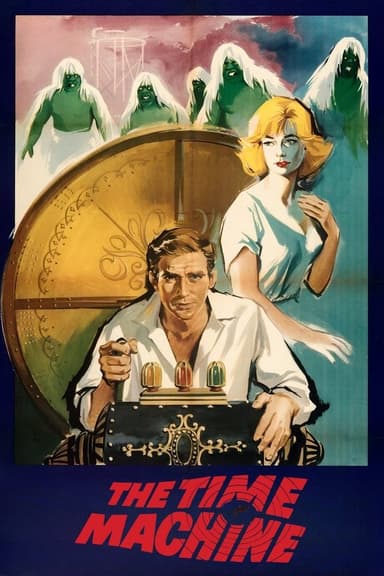
The Land That Time Forgot
1974 • Action, Adventure, Science Fiction • PG
During World War I, a German U-boat sinks a British passenger ship and takes the survivors aboard. After getting lost in fog, the submarine surfaces near the unknown island of Caprona, a lost world where they find dinosaurs and Neanderthals.
Runtime: 1h 30m
Why you should read the novel
Edgar Rice Burroughs’ original novel, The Land That Time Forgot, plunges readers deep into a mysterious prehistoric world filled with vividly imagined creatures and primal dangers. The book offers a gripping, first-person perspective that draws you directly into the chaos aboard a hijacked German U-boat crashing upon the lost continent of Caprona. Burroughs’ rich descriptions and relentless pace make every chapter a page-turner, capturing the raw wonder and terror of an untouched land teeming with ancient beasts.
Unlike the limits of 1970s special effects, the novel unleashes your imagination, rendering suspenseful chases, battles, and evolving civilizations in greater detail than any film adaptation could convey. The layered narrative, including scientific speculation and character introspection, gives you a deeper look at the emotional and psychological challenges faced by the survivors. This immersive storytelling equips the reader with an adventure that feels larger, more intricate, and more engaging than its cinematic counterpart.
Exploring the original book is not merely retracing the movie’s steps, but embarking on an expansive, thought-provoking journey that honors classic adventure fiction. Burroughs’ masterful world-building and philosophical undertones invite you to reflect on human nature, survival, and the allure of the unknown—making the novel an essential read for any fan of imaginative literature.
Adaptation differences
One of the primary differences between the film adaptation and Burroughs’ novel lies in the narrative perspective and depth of the storytelling. The novel employs a first-person point of view from Bowen Tyler, immersing readers in his thoughts, strategies, and emotional arc. In contrast, the film delivers an externalized narrative, often sidelining the protagonist’s internal monologue and complex motivations, thus offering a more streamlined, action-focused experience.
The book delves into the scientific curiosity and theorizing about Caprona’s biological mysteries, including the concept of evolutionary zones on the island. Burroughs’ characters spend time studying the land’s unique life cycle and pondering its implications, whereas the film gives these ideas little screen time, condensing or omitting some of the speculative world-building that fans of the novel cherish.
Significant plot elements and character developments are altered or simplified in the adaptation. Some supporting characters are combined, omitted, or given markedly different arcs and personalities in the film. For example, dramatic betrayals and alliances in the book are often resolved differently or glossed over entirely, impacting the overall tension and interpersonal conflicts present in the narrative.
The movie’s ending is also less ambiguous and complex than that of the novel. While Burroughs leaves readers with a provocative, unresolved finale that enhances the story’s sense of mystery and loss, the film takes a more definitive approach, closing several character arcs and plotlines more neatly for cinematic satisfaction. The result is an adaptation that offers spectacle and adventure but lacks some of the novel’s intellectual depth and open-ended intrigue.
The Land That Time Forgot inspired from
The Land That Time Forgot
by Edgar Rice Burroughs










